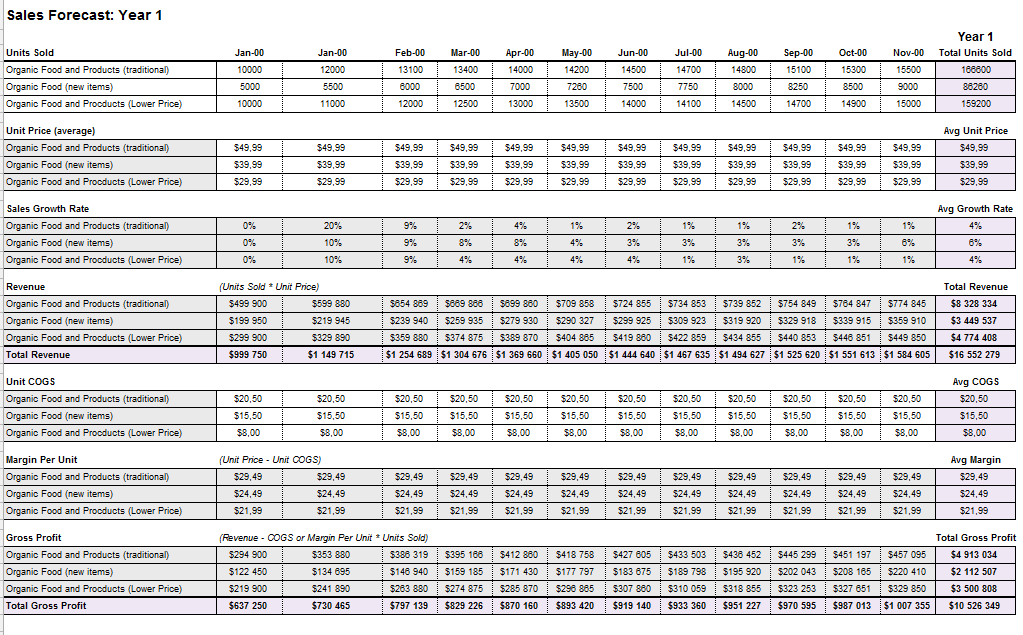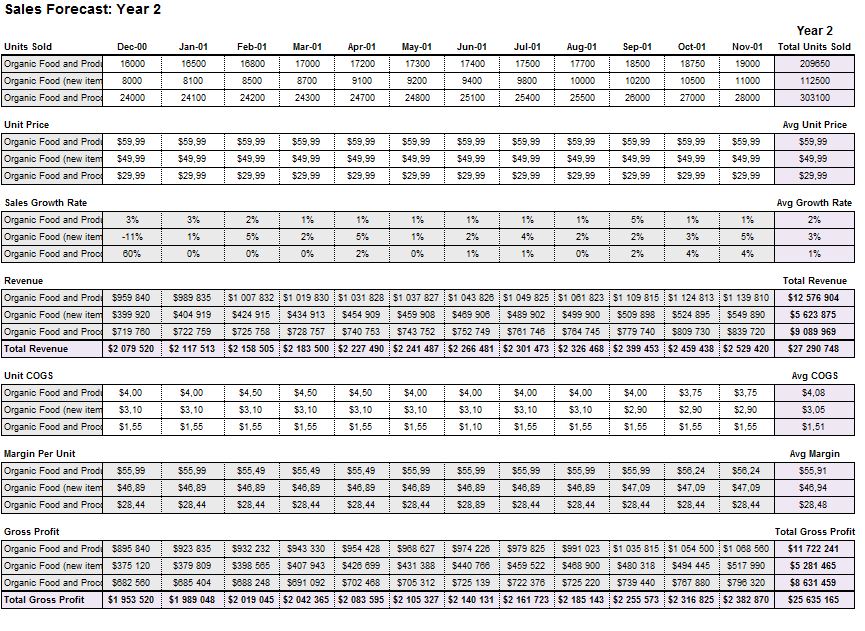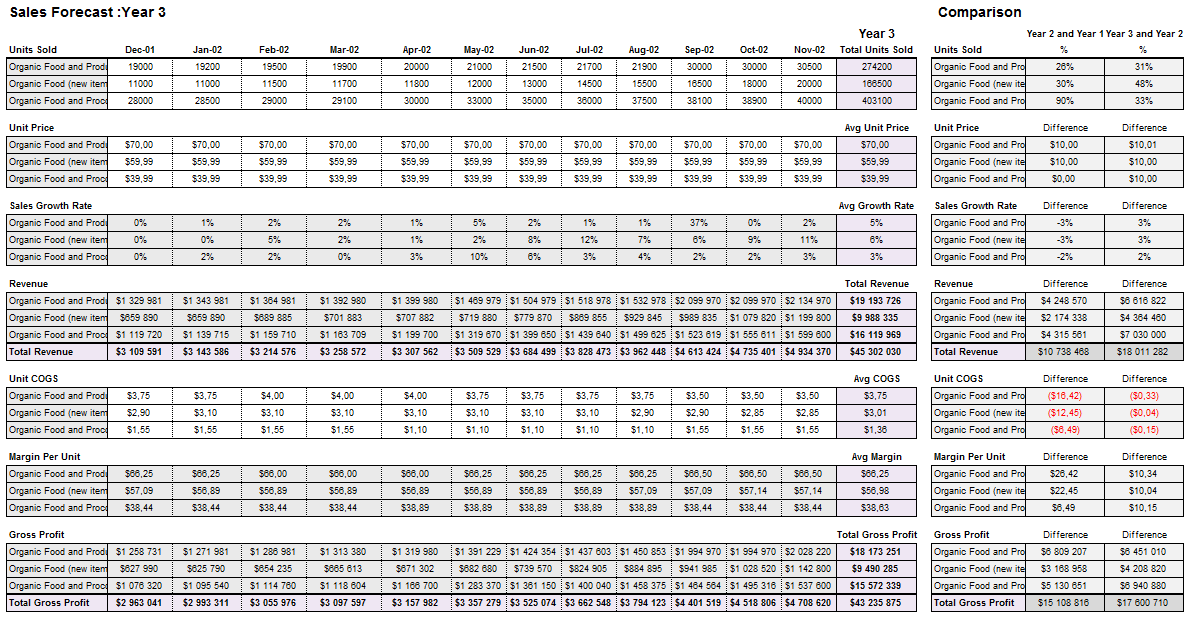Executive Summary
Whole Foods, Inc. has become the household name for organic products (OP). Being the largest chain of OP in the United States, Whole Foods has gained impressive wright and established a powerful presence in its market. However, to expand even further and extend its influence, the company should build a partnership with a non-profit organization. Thus, the firm will drive the attention of an even greater number of investors to itself and gain extra attention.
The charity chosen for the event is the Non-GMO Project. It is expected that, by supporting the specified organization, Whole Foods will gain even more influence in the target market and gain the support of a vast number of customers, including green foodists. Specifically, by partnering with the Non-GMO Project, Whole Foods will cement its image of a company that is concerned with its customers’ health rates and is willing to introduce healthier options to its buyers.
By integrating the latest marketing tools, particularly the use of digital marketing as the means of catering to the target audience’s needs, one will be able to drive green foodists’ attention to the event and introduce new options for investment sources to Whole Foods. As a result, the organization will receive the media coverage and the support required to maintain its influence in the global market and shape its brand to appeal to as wide a demographic as possible.
Marketing Plan
Whole Foods will need to embrace new opportunities and attract new customers in order to expand and prosper. At present, the firm should target not only wealthy proponents of a healthy lifestyle but also more specific customer groups such as green foodists. As a result, the organization will introduce a more diverse approach toward its production process ad build connections with new audiences, developing a better understanding of its target market.
For this purpose, collaboration with a non-profit organization such as Non-GMO Project will be required. Because of the current lack of diversity in its segmentation framework, Whole Foods should consider diversifying its products and introducing a more elaborate consumer segmentation approach along with a more flexible pricing strategy (Williams & Nestle, 2017). As a result, a steep increase in the profit margins will be expected.
SWOT Analysis
Table 1. SWOT analysis.
As the results of the SWOT analysis indicate, there is a need to focus on shaping the existing customer segmentation framework. While the company is striving to adjust to the needs of its buyers, it dismisses a very large portion of potential clients who may be willing to consider the opportunity to change their dieting options. Therefore, it will be desirable for the company to shape its current approach toward segmentation and include the demographic that Whole Foods does not typically view as its target audience.
The problems associated with the pricing policy of the company are, perhaps, the most complicated ones. Because of the high quality of the products that Whole Foods offers, as well as the challenges regarding the consistency of the processes of its supply chain expeditious and efficient, the firm needs to establish a rather rigid pricing framework. However, when cooperating with the Non-GMO Project, Whole Foods may need to reconsider its existing pricing approach, including options for customers to save money (Peterson, 2018). The options such as seasonal and holiday discounts, particularly pricing opportunities associated with the event, will need to be introduced to address the specified concern.
PESTLE
Table 2. Whole Foods: PESTLE.
The outcomes of the PESTLE analysis indicate that Whole Foods will have to take the problems concerning the lack of economic stability when expanding into other markets. In contrast to the U.S. economic setting, where the firm enjoys comparatively high stability rates, the global setting implies dealing with political, legal, social, and economic obstacles. The issue of legal impediments is of particularly high significance for Whole Foods since, when entering the realm of other economics, the company is likely to encounter high levels of bureaucracy (Peterson, 2018), as well as country-specific regulations regarding organic food production and sale.
Technology as a factor may also affect the performance of Whole Foods in a new market. For instance, in the states where technological progress has been hampered, it may be difficult for the company to produce goods that meet the set quality standards. Therefore, it is critical to ensure that the cooperation with the Non-GMO project will allow using all available technological tools for maintaining the quality of the product consistently high (O’Donnell, Fagan, & Cullen, 2014). Furthermore, the fact that the existing technological advances allow for the enhancement of sustainable use of resources needs to be regarded as an important opportunity that Whole Foods could explore in cooperation with the Non-GMO Project.
4Ps of Marketing (Marketing Mix)
In regard to the marketing mix that the company should deploy for the project to succeed, Whole Foods will need to concentrate on the introduction of options for green foodists, as well as the customers that may lack the finances required for purchasing some of the common Whole Foods’ products. Rebranding as an organization that is capable of tailoring its production to the needs and capacities of any population should also be seen as a crucial step toward building a stronger presence in the global market.
By partnering with the Non-GMO Project, the firm will be capable of revisiting its current approach toward pricing, thus causing people of different social statuses and financial opportunities to pay closer attention to Whole Foods’ offers (Liozu & Hinterhuber, 2014). Thus, green foodists and other groups will be attracted to the products that Whole Foods provide. Moreover, introducing diversification is an important step toward gaining more influence in the market. In addition, the organization will have to consider innovative options for promoting its new brand, such as the use of online applications (apps).
Table 4. 4Ps of Marketing: Wholefoods.
At present, the pricing issue remains the weakest aspect of Whole Foods’ marketing framework. While the company’s attempt at leveraging its expenses by setting prices high is understandable, it is critical to deploy the strategy that will allow gaining the attention of new customers (Williams & Nestle, 2017). Discounts, customer cards, and other tools for attracting people of different annual incomes and backgrounds will have to be utilized.
Furthermore, the current image of the product would require shaping. Since Whole Foods is going to make it more acceptable and attract new types of customers, it will be necessary to introduce the brand image that would refrain from the traditional appeal to the social elite and, instead, introduce opportunities for all customers. The proposed change will require alterations in the product segmentation used at Whole Foods. Specifically, the firm will need to consider creating healthy food options that will also open money-saving opportunities for buyers. The specified step will imply creating goods that will be both comparatively cheap and at the same time healthy.
Moreover, the creation of a new app that will allow people to navigate the array of options provided by the company should be seen as a possible product. Furthermore, the application for calculating the calorie intake, energy consumption, and use, and other important aspects of a healthy lifestyle associated with dieting should be introduced. The introduction of the specified items into the range of options that Whole Foods provide will allow attracting green foodists and other types of customers.
Finally, when considering product diversification, one should also mention the fact that Whole Foods provides rather generic options currently. Thus, it will be crucial to incorporate culture-specific opportunities for buyers. At present, the organization offers a vast range of goods, which include not only food but also care products, yet the current approach toward production appears to be far too generic to appeal to any particular demographic (Fernandes & Srinivasan, 2018).
Therefore, by partnering with the Non-GMO Project, Whole Foods will have to change its branding approach to the production of culture-specific goods along with traditional ones. The proposed step includes the introduction of culture-specific food into the list of the current products, the inclusion of exotic products into the 365 Everyday Value brand, and other changes associated with catering to the needs of cultural minorities.
Porter’s Five Forces Analysis
Table 4. Porter’s 5 Forces: Whole Foods.
An overview of the current situation regarding the company’s competitiveness rates has proven that Whole Foods remains at the top of the market chain and is likely to maintain the position of a leader unless a disruptive innovation introduced into the global market will alter the status quo. Nonetheless, the competition levels are extraordinarily high in the specified environment, which needs to be taken into consideration during collaboration with the Non-GMO Project.
Since the bargaining power of buyers is very high due to the availability of similar products, Whole Food s will have to create a new brand image that will allow cementing its influence in the global market and refreshing the way in which customers perceive it (Park, MacInnis, & Eisingerich, 2016). Particularly, the organization will have to introduce the idea of diversity into the range of its goods, thus appealing t diverse groups. In addition, cheaper options for people with low-income levels will have to be created to gain new audiences.
Segmentation
As stressed above, the approach toward customer segmentation that Whole Foods adopt leaves much to be desired. The company will also need to target middle-to-low-income customers as possible buyers in order to expand to other markets and acquire greater attention. Green foodists, as one of the groups whose needs the Non-GMO Project caters, should be interpreted as one of the primary target groups that Whole Foods should consider. For this purpose, new and cheaper brands will have to be designed and marketed to the specified demographic (Fernandes & Srinivasan, 2018). The Non-GMO Project may assist Whole Foods in the specified task by using its channels for communicating with the new type of buyers.
Sales Forecasts



It is expected that the specified event and the further partnership with Non-GMO Project will help Whole Foods to increase its profit margins. While the project requires substantial investments at present, including the expenses for the event and the costs for designing a new brand, it is expected that a vast number of new customers will emerge soon, being attracted to cheaper healthy dieting options that the company will offer (Fernandes & Srinivasan, 2018). Specifically, sales are expected to rise by 2.6% on average.
Despite the minor setback during the first year, when the framework will still be tested, it is belie4ved that the second and the third years of the collaboration between Whole Foods and the Non-GMO Project will return significant profits. Particularly, the 26% and 31% change in the number of units sold in the specified market is believed to affect the overall success rate of the project significantly. It is important that the prices for the organic food and products sold at a lower price should remain comparatively cheap to retain the audience at which the project is currently targeted. Specifically, the pricing strategy needs to consider the interests of green foodists and customers with fewer financial options.
Value Chain Analysis
The current value chain of Whole Foods can be described as well-developed and quite rigid. Due to the high-quality standards, the company has a range of standards for its products, which is why it has well-developed relationships with all participants across the value chain, including vendors, suppliers, and distributors (Phillips-Connolly & Connolly, 2017). However, it is advisable that the existing inventory for product management and distribution, which the company utilizes, could provide access to remote areas and reach out to all customers interested in the product.
Marketing Strategy
It is strongly advised that a combination of the traditional marketing tools and the use of digital marketing be deployed. The specified approach will allow embracing as many participants as possible, thus cementing Whole Foods’ position in the global market. However, it is recommended to place a greater emphasis on the use of digital tools. The development of a new brand and rebranding the current global image of the organization will also have to be regarded as a necessity since, with the support of the Non-GMO Project, Whole Foods will strive to appeal to diverse populations.
Specifically, buyers belonging to the lower class, as well as people of different cultural backgrounds, will have to be regarded as the focus of the company’s attention (Park et al., 2016). Therefore, the current marketing strategy will have to be focused on diversifying the products and establishing Whole Foods as the company that appeals to the needs of people belonging to the lower class.
Conclusion
Although Whole Foods has already gained quite a reputation due to the unceasing focus on healthy nutrition options, the company will gain even larger influence after partnering with the Non-GMO Project and arranging an event that will attract the attention of potential investors. In addition, by utilizing the latest innovative technologies, including digital marketing tools, Whole Foods will be able to attract new customers and cement its position as the most powerful organization providing organic products.
The firm will receive the positive exposure that it will need to increase its influence in the global market and raise its competitiveness, which is critical given the levels of rivalry and the threat of new entrants. Thus, by cooperating with the Non-GMO Project, Whole Foods will be capable of expanding into new territory and increasing its influence in the context of the global economy.
References
Fernandes, L., & Srinivasan, R. (2018). A consumer analysis of Whole Foods market. International Journal of Latest Engineering and Management Research (IJLEMR), 3(2), 37-41.
Liozu, S., & Hinterhuber, A. (2014). The ROI of pricing: Measuring the impact and making the business case. New York, NY: Routledge.
O’Donnell, C. P., Fagan, C., & Cullen, P. J. (Eds.) (2014). Process analytical technology for the food industry. New York, NY: Springer.
Park, C. W., MacInnis, D. J., & Eisingerich, A. B. (2016). Brand admiration: Building a business people love. New York, NY: Routledge.
Peterson, H. (2018). Whole Foods has a ‘high class’ problem that’s leading to ‘entirely empty’ shelves. Business Insider. Web.
Phillips-Connolly, K., & Connolly, A. J. (2017). When Amazon ate Whole Foods: Big changes for Big Food. International Food and Agribusiness Management Review, 20(5), 615-622. Web.
Williams, S. N., & Nestle, M. (Eds.). (2017). Big food: Critical perspectives on the global growth of the food and beverage industry. New York, NY: Routledge.
